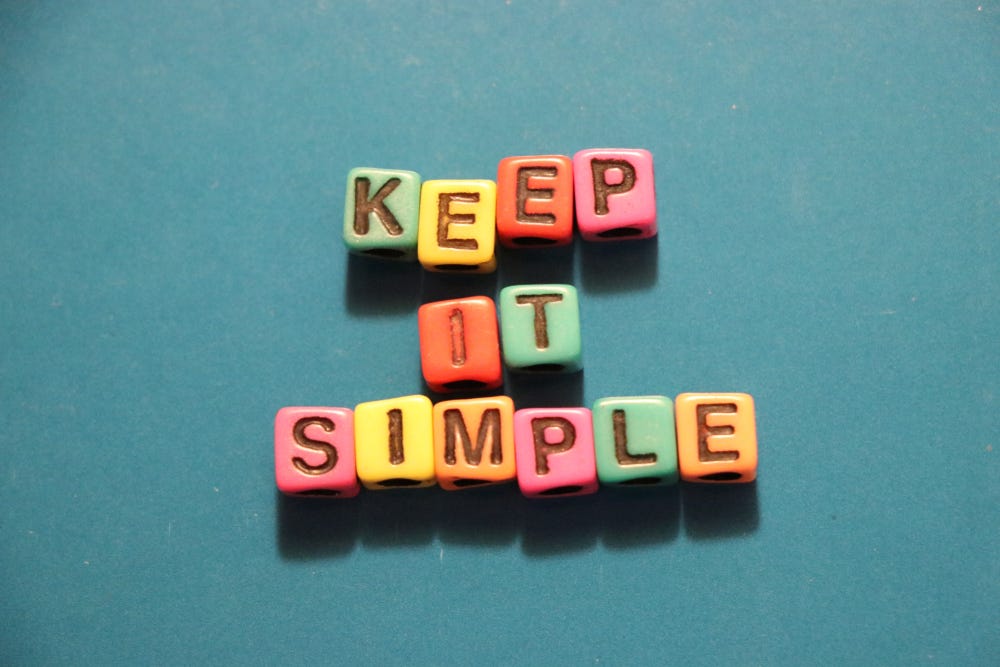The Laws of Simplicity
“Simplicity is about subtracting the obvious, and adding the meaningful.”
John Maeda is a graphic designer and computer scientist. His book, The Laws of Simplicity, proposes ten laws for simplifying complex systems in business and life. Think of it as a crash course on simplicity 101.
Simplicity = Sanity
Technology has made our lives more full, yet at the same time we’ve become uncomfortably “full.”
Ten Laws
REDUCE The simplest way to achieve simplicity is through thoughtful reduction.
ORGANIZE Organization makes a system of many appear fewer.
TIME Savings in time feel like simplicity.
LEARN Knowledge makes everything simpler.
DIFFERENCES Simplicity and complexity need each other.
CONTEXT What lies in the periphery of simplicity is definitely not peripheral.
EMOTION More emotions are better than less.
TRUST In simplicity we trust.
FAILURE Some things can never he made simple.
THE ONE Simplicity is about subtracting the obvious, and adding the meaningful.
Three Keys
In addition to the ten Laws, Maeda offers three Keys to achieving simplicity in the technology domain.
AWAY More appears like less by simply moving it far, far away.
OPEN Openness simplifies complexity.
POWER Use less, gain more.
Let’s take a look at a few of these.
The simplest way to achieve simplicity.
The simplest way to achieve simplicity is through thoughtful reduction. When in doubt, just remove. But be careful of what you remove. … When it is possible to reduce a system’s functionality without significant penalty, true simplification is realized.
What is simplicity about?
Simplicity is about the unexpected pleasure derived from what is likely to be insignificant and would otherwise go unnoticed.
The relationship between space and clutter
At first, a larger home lowers the clutter to space ratio. But ultimately, the greater space enables more clutter.
Small changes in organization create big differences in a design.
Squint at the world.
The best designers in the world all squint when they look at something. They squint to see the forest from the trees — to find the right balance. Squint at the world. You will see more, by seeing less.
Time Savings
When forced to wait, life seems unnecessarily complex. Savings in time feel like simplicity. A shot from the doctor hurts less when it happens quickly, and even less when we know that the shot will save our lives.
Knowledge makes everything simpler.
This is true for any object, no matter how difficult. The problem with taking time to learn a task is that you often feel you are wasting time, a violation of the third Law. We are well aware of the dive-in-head-first approach-“I don’t need the instructions, let me just do it.” But in fact this method often takes longer than following the directions in the manual.
Good Design
The best designers marry function with form to create intuitive experiences that we understand immediately-no lessons (or cursing) needed. Good design relies to some extent on the ability to instill a sense of instant familiarity.
Need to Know vs. Nice to Know
Difficult tasks seem easier when they are “need to know” rather than “nice to know.” A course in history, mathematics, or chemistry is nice to know for a teenager, but completing driver’s education satisfies a fundamental need for autonomy.
Simplicity and complexity need each other.
The more complexity there is in the market, the more that something simpler stands out.
It’s best to preserve emptiness because nothing is an important something.
The opportunity lost by increasing the amount of blank space is gained back with enhanced attention on what remains. More white space means that less information is presented. In turn, proportionately more attention shall be paid to that which is made less available. When there is less, we appreciate everything much more.
Some things can never be made simple. Complexity can be beautiful.
Concentrate on the deep beauty of a flower. Notice the many thin, delicate strands that emanate from the center and the sublime gradations of hue that occur even in the simplest white blossom. Complexity can be beautiful. At the same time, the beautiful simplicity of planting a seed and just adding water lies at even the most complex flower’s beginning.
Remember, “Technology and life only become complex if you let it be so.”


